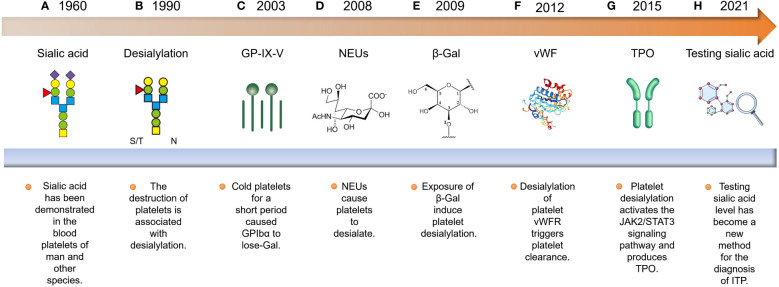Figure 1.
Historical progression of platelet desialylation: (A, B) The discovery of platelet desialylation can be traced back to the 1960s. (C) Subsequently, research has elucidated its significant impact on the pathogenesis of ITP, particularly in relation to the exposure of GPIbα to N-GlcNAC recognition sites, which are cleared by αMβ2 recognition. (D, E) Furthermore, researchers found that neuraminidases released by Streptococcus pneumoniae caused platelet desialylation, exposing β-Gal. This exposed residue is recognized and cleared by the AMR. (F) Additionally, desialylation of the vWFR on platelets accelerated their clearance. (G, H) With an in-depth understanding of the mechanisms governing platelet desialylation, relevant diagnostic and therapeutic methods have emerged. These include sialic acid level detection, immunosuppressant administration, and immunoglobulin therapy.

